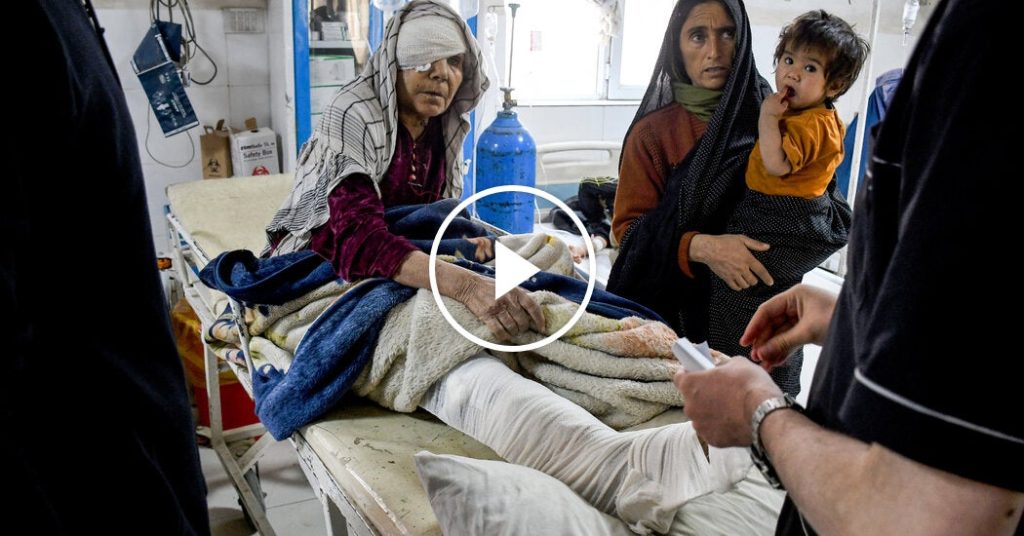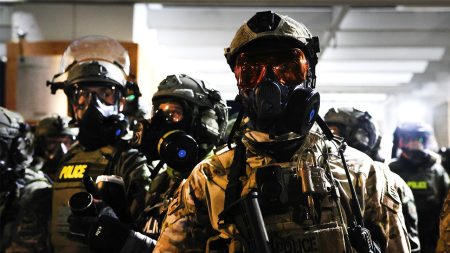Devastating Earthquake in Afghanistan Damages Historic Blue Mosque, Leaves Communities in Crisis
Powerful 6.3-Magnitude Tremor Claims Lives and Destroys Heritage in Northern Afghanistan
By James Harrington | International Correspondent
November 3, 2025
In the early hours of Sunday morning, northern Afghanistan was rocked by a powerful 6.3-magnitude earthquake that has claimed at least 15 lives, injured hundreds more, and inflicted significant damage to one of the country’s most treasured cultural landmarks – the magnificent 15th-century Blue Mosque. The tremor, which struck at 3:17 AM local time, sent terrified residents fleeing from their homes in the darkness as structures crumbled across multiple provinces. Emergency responders have been working tirelessly in affected areas, with rescue operations continuing as authorities fear the death toll may rise in the coming days.
The Blue Mosque, formally known as the Shrine of Ali or Mazār-i-Sharīf, stands as Afghanistan’s architectural crown jewel and a pilgrimage site of immense religious and historical significance. Renowned for its stunning turquoise-tiled domes and intricate Islamic geometric patterns that have drawn visitors from around the world for centuries, the mosque has now sustained concerning structural damage. Preliminary assessments indicate cracks in several of the mosque’s iconic blue domes, partial collapse of an eastern minaret, and significant damage to the ornate interior prayer hall. “This is not just a building – it represents our cultural identity and spiritual heritage,” explained Dr. Fawzia Koofi, a cultural preservation expert from Kabul University. “The Blue Mosque has survived wars and previous natural disasters since the 1400s, making this damage particularly heartbreaking for all Afghans, regardless of their background.”
The humanitarian situation on the ground remains dire as temperatures have dropped significantly in the region, complicating rescue and relief efforts. In Mazar-i-Sharif, the nearest major city to the earthquake’s epicenter, hospitals are overwhelmed with the injured, many suffering from crush injuries, broken bones, and trauma. Medical supplies were already limited before the disaster, creating a critical healthcare emergency. Footage from local hospitals shows corridors lined with patients on makeshift beds, while doctors work around the clock with dwindling resources. “We’re seeing entire families arrive with multiple injuries,” reported Dr. Sayed Rahman, a physician at Balkh Regional Hospital. “Many victims were asleep when their homes collapsed, giving them little chance to escape. Children and the elderly have been disproportionately affected, and we urgently need additional medical supplies, especially pain management medications and orthopedic equipment.”
International aid organizations have begun mobilizing response teams, though logistical challenges remain significant in the mountainous, hard-to-reach regions most severely impacted. The World Health Organization has dispatched emergency medical teams with trauma kits, while UNICEF is providing temporary shelter solutions and clean water facilities. However, ongoing political complexities and security concerns in Afghanistan continue to hamper the scale and speed of international response. “This earthquake has struck communities already struggling with multiple crises,” said Maria Holtsberg, regional disaster response coordinator for the International Federation of Red Cross and Red Crescent Societies. “Many affected areas were already experiencing food insecurity and limited access to healthcare. Now, with winter approaching and thousands potentially displaced, we’re racing against time to prevent a secondary humanitarian disaster.”
The geological impact of the earthquake extends beyond immediate structural damage, with seismologists warning of potential aftershocks that could further destabilize weakened buildings and trigger landslides in mountainous areas. The Afghan region sits on complex fault lines where the Indian and Eurasian tectonic plates meet, making it particularly vulnerable to seismic activity. Professor Najib Karim, a geophysicist at the Afghanistan Geological Survey, explained that this earthquake, while not the strongest to hit the region historically, was particularly destructive due to its shallow depth and proximity to populated areas. “The epicenter was just 10 kilometers below the surface, which means the energy wasn’t dissipated through deep earth layers before reaching communities,” Karim noted. “Additionally, many structures in rural Afghanistan are not built to withstand significant seismic events, which unfortunately amplifies casualty numbers even in moderate earthquakes.”
The damage to the Blue Mosque has sparked urgent calls for international cultural preservation expertise and funding. UNESCO representatives have expressed deep concern about the monument’s condition and have offered technical support for assessment and restoration. “This is not just Afghanistan’s heritage – it belongs to all humanity,” stated UNESCO Director-General Jean Pascal in a statement released hours after news of the damage emerged. “We stand ready to provide emergency support for the preservation of this irreplaceable monument.” Local religious leaders and community members have already begun small-scale efforts to protect exposed sections of the mosque from further deterioration, covering damaged areas with tarpaulins and carefully collecting fallen tiles and decorative elements. Historical preservation experts emphasize that proper restoration will require specialized knowledge and materials to maintain the mosque’s architectural integrity and cultural authenticity.
The earthquake represents yet another challenge for Afghanistan’s people, who have endured decades of conflict, political instability, and economic hardship. In rural villages near the epicenter, entire communities have been displaced, with families seeking shelter in makeshift camps or with relatives in less affected areas. Humanitarian workers report that basic necessities like clean water, food, and medicine are in critically short supply. “I lost my home and two family members,” said Fatima Rahmani, a 47-year-old survivor from a village outside Mazar-i-Sharif, her voice breaking as she spoke from a temporary shelter. “We have nothing left. The government must help us rebuild not just our homes, but our lives.” As international attention focuses on the immediate rescue and relief operations, experts stress that long-term recovery support will be essential for affected communities to rebuild their homes, livelihoods, and cultural landmarks like the beloved Blue Mosque that has stood as a symbol of Afghan resilience for more than five centuries.
The Road to Recovery: Balancing Immediate Needs with Cultural Preservation
The dual challenges of addressing urgent humanitarian needs while safeguarding irreplaceable cultural heritage create complex priorities for both Afghan authorities and international partners. Experts in disaster response emphasize that while human suffering must take precedence, cultural landmarks like the Blue Mosque represent crucial anchors of community identity and resilience during recovery. “When people lose everything, these cultural monuments become even more important as symbols of continuity and hope,” explained Dr. Elena Corbett, an architectural conservation specialist who has worked on post-disaster heritage preservation in multiple conflict zones. “Preserving the Blue Mosque isn’t just about tourism or history – it’s about maintaining the spiritual and cultural foundation that will help these communities heal and rebuild.”
As dawn broke over the affected regions on Monday, the true scale of destruction became increasingly apparent. Satellite imagery revealed extensive damage patterns across dozens of villages, with some remote communities still awaiting their first contact with emergency responders. International aid coordinators are establishing a unified response strategy that prioritizes life-saving interventions while acknowledging the significant cultural loss. The earthquake has once again highlighted Afghanistan’s vulnerability to natural disasters and the ongoing challenges in building resilient infrastructure in a country where resources for disaster preparedness have been chronically limited.
For the people of northern Afghanistan and cultural preservationists worldwide, the road to recovery will be long, but the shared determination to restore both communities and their precious heritage offers a glimmer of hope amid the devastation. As one local imam stated while standing before the damaged but still standing Blue Mosque: “These walls have witnessed centuries of history – war, peace, joy and sorrow. They will stand again, just as our people always rise after falling. This is the Afghan way.”











